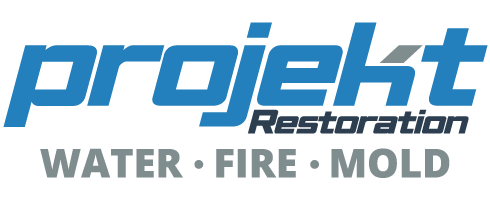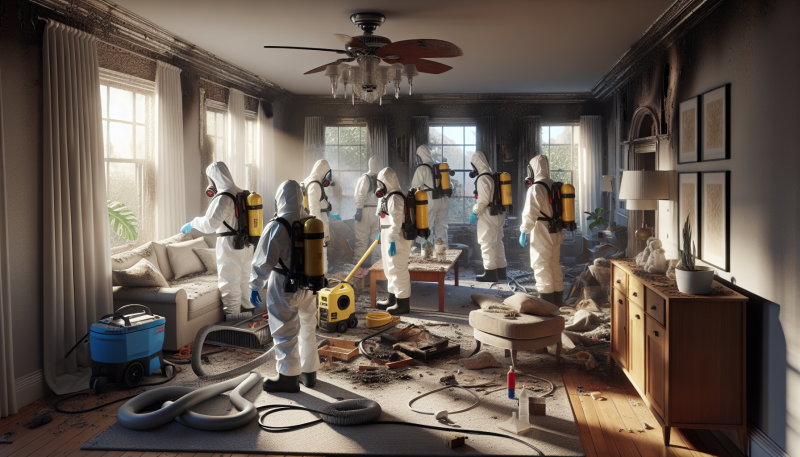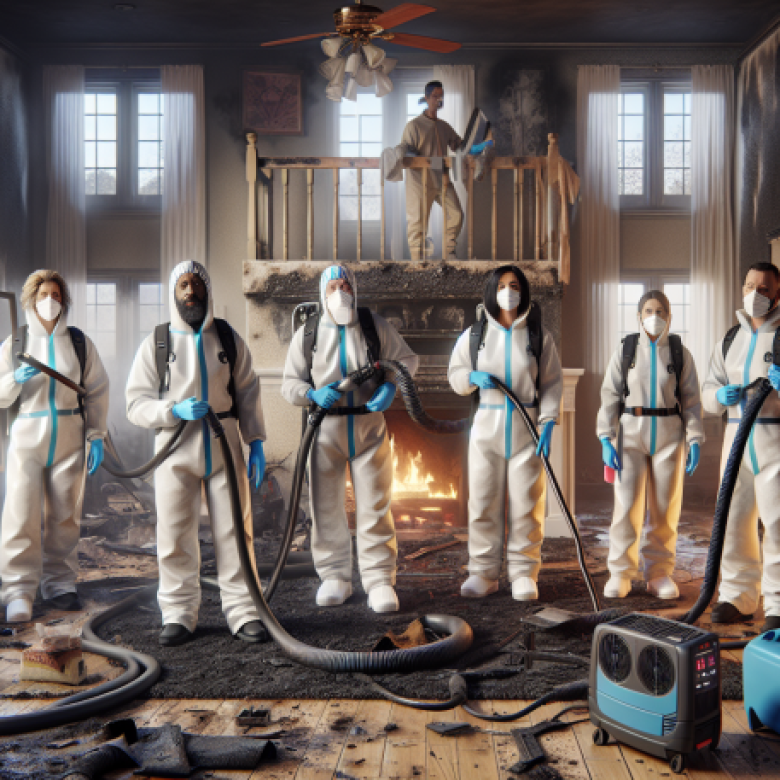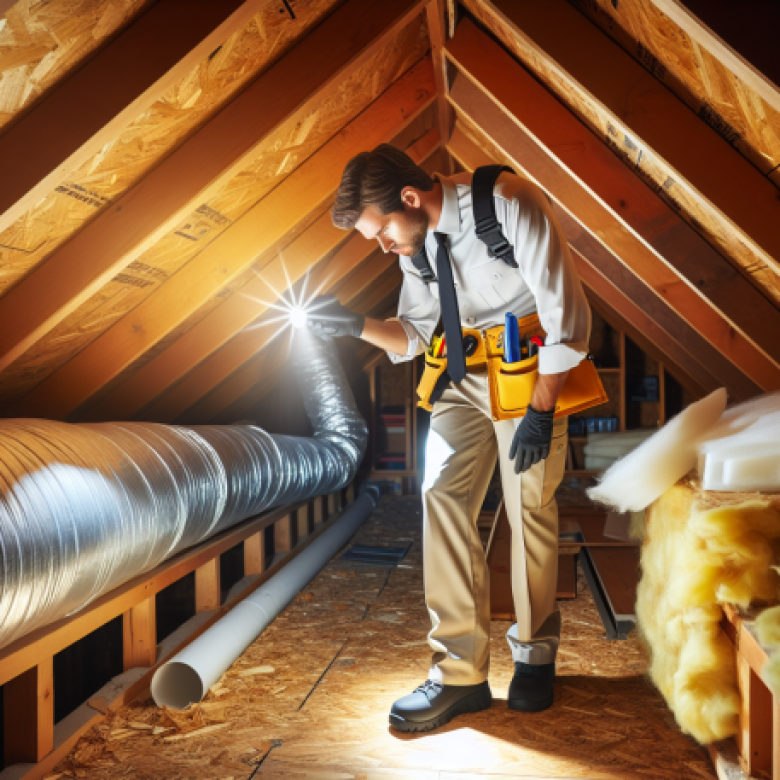Meta Description: Discover the comprehensive Fire Damage Restoration Process with Projekt Restoration, your trusted experts in commercial and residential property restoration. Learn about water damage restoration, mold assessment, and more.
Understanding the Fire Damage Restoration Process
When disaster strikes, particularly in the form of a fire, the aftermath can be overwhelming. The Fire Damage Restoration Process is crucial for returning your property to its pre-loss condition. Whether it’s a residential or commercial property, understanding what to expect can ease the burden during such a challenging time.
What Is Fire Damage Restoration?
Fire damage restoration involves a series of steps taken to restore a property after it has been affected by fire. This process includes assessing the damage, cleaning up debris, and repairing or replacing damaged structures. Companies like Projekt Restoration specialize in this area, providing comprehensive services to help you navigate the aftermath of a fire.
Why Is Fire Damage Restoration Important?
Restoration is essential not just for aesthetic reasons but also for safety. Fire can compromise the structural integrity of a building, and lingering smoke and soot can lead to health issues. Engaging professionals ensures that all hazards are addressed, and your property is safe for occupancy.
The Initial Assessment: What to Expect
The first step in the Fire Damage Restoration Process is a thorough assessment of the damage. This involves:
- Visual Inspection: Professionals will examine the property for visible signs of fire damage, including charred materials and smoke stains.
- Damage Classification: The extent of the damage is classified into categories, which helps determine the restoration approach.
- Safety Evaluation: Assessing the structural integrity and identifying any hazardous materials, such as asbestos, is crucial.
Creating a Restoration Plan
Once the assessment is complete, a detailed restoration plan is developed. This plan outlines the steps needed to restore the property, including:
- Cleaning and Removal: Removing debris and damaged materials.
- Repairing Structures: Fixing or replacing walls, roofs, and other structural elements.
- Restoration of Contents: Cleaning and restoring personal belongings and furniture.
Water Damage Restoration: A Common Companion
Often, fire damage is accompanied by water damage from firefighting efforts. This necessitates a water damage restoration process, which includes:
- Water Extraction: Removing standing water using pumps and vacuums.
- Drying: Using dehumidifiers and fans to dry out the property.
- Mold Prevention: Implementing measures to prevent mold growth, which can occur in damp conditions.
Mold Assessment and Remediation
After a fire, mold can become a significant concern, especially if water damage is present. Mold assessment and remediation involve:
- Inspection: Identifying areas where mold may grow.
- Testing: Conducting air quality tests to determine mold spore levels.
- Removal: Safely removing mold using specialized techniques and equipment.
Fire Damage Cleanup: The Heart of Restoration
Cleanup is a critical phase in the Fire Damage Restoration Process. This includes:
- Debris Removal: Clearing out burnt materials and debris.
- Soot and Smoke Removal: Using specialized cleaning agents to remove soot from surfaces.
- Odor Removal: Implementing techniques to eliminate smoke odors, such as ozone treatments.
Reconstruction Services: Bringing Your Property Back to Life
Once cleanup is complete, reconstruction can begin. This phase may involve:
- Structural Repairs: Fixing or replacing damaged walls, roofs, and floors.
- Cosmetic Repairs: Painting, flooring, and other aesthetic improvements.
- Final Touches: Ensuring everything is up to code and safe for occupancy.
Biohazard Cleanup: Addressing Health Risks
In some cases, fire damage may involve biohazards, such as chemicals or hazardous materials. Biohazard cleanup is essential to ensure safety and compliance with health regulations. This process includes:
- Identification: Recognizing hazardous materials that may be present.
- Safe Removal: Following strict protocols for the safe removal and disposal of biohazards.
Insurance Claims Assistance: Navigating the Process
Dealing with insurance claims can be daunting. Many restoration companies, including Projekt Restoration, offer insurance claims assistance to help you through the process. This includes:
- Documentation: Providing necessary documentation for your claim.
- Communication: Liaising with your insurance company on your behalf.
- Maximizing Coverage: Ensuring you receive the full benefits of your policy.
24/7 Emergency Services: Always Ready to Help
Fires can happen at any time, which is why many restoration companies offer 24/7 emergency services. This means:
- Immediate Response: Quick action to mitigate damage.
- On-Site Assessment: Professionals can assess the situation and begin the restoration process promptly.
- Peace of Mind: Knowing help is just a call away can alleviate stress during a crisis.
The Role of Professionals in Fire Damage Restoration
While some may consider DIY approaches, the complexities of fire damage restoration necessitate professional expertise. Trained professionals bring:
- Experience: Knowledge of the best practices and techniques for effective restoration.
- Equipment: Access to specialized tools and equipment that are not typically available to the average homeowner.
- Safety: Understanding of safety protocols to protect both workers and occupants.
Common Misconceptions About Fire Damage Restoration
There are several misconceptions surrounding fire damage restoration that can lead to confusion. Here are a few:
- It’s Just Cleaning: Many believe that fire damage restoration is merely cleaning up. In reality, it involves a comprehensive process of assessment, cleanup, and reconstruction.
- DIY is Sufficient: While minor cleanup may be manageable, significant damage requires professional intervention to ensure safety and compliance.
- Insurance Covers Everything: Not all damages may be covered under your policy. Understanding your coverage is crucial.
The Cost of Fire Damage Restoration
The cost of restoration can vary significantly based on several factors, including:
- Extent of Damage: More extensive damage will naturally incur higher costs.
- Location: Costs can vary by region and local labor rates.
- Insurance Coverage: Your policy may cover some or all of the costs, affecting your out-of-pocket expenses.
Low Pricing Options for Fire Damage Restoration
Many restoration companies offer low pricing options to make their services more accessible. This can include:
- Discounts for Early Engagement: Some companies provide discounts for clients who engage their services promptly.
- Flexible Payment Plans: Offering payment plans can help ease the financial burden.
- Insurance Partnerships: Collaborations with insurance companies can lead to reduced costs for clients.
How to Choose the Right Fire Damage Restoration Company
Choosing the right company for fire damage restoration is crucial. Here are some tips:
- Check Credentials: Ensure the company is licensed and insured.
- Read Reviews: Look for customer testimonials and reviews to gauge their reputation.
- Ask About Experience: Inquire about their experience with fire damage restoration specifically.
Frequently Asked Questions (FAQs)
1. What should I do immediately after a fire?
After ensuring everyone is safe, contact emergency services and then reach out to a fire damage restoration company. They can assess the damage and begin the restoration process.
2. How long does the fire damage restoration process take?
The duration varies based on the extent of the damage. Minor repairs may take a few days, while extensive damage could take weeks or even months.
3. Will my insurance cover fire damage restoration?
Most homeowners’ insurance policies cover fire damage, but coverage can vary. It’s essential to review your policy and consult with your insurance agent.
4. Can I stay in my home during the restoration process?
This depends on the extent of the damage. If the structure is unsafe, you may need to find temporary housing until the restoration is complete.
5. What if there’s water damage from firefighting efforts?
Water damage restoration is often part of the fire damage restoration process. Professionals will address both issues simultaneously.
6. How can I prevent future fires?
Regular maintenance, installing smoke detectors, and following fire safety protocols can help reduce the risk of future fires.
Conclusion: Moving Forward After Fire Damage
Experiencing a fire can be one of the most traumatic events in a person’s life. However, understanding the Fire Damage Restoration Process can empower you to take the necessary steps toward recovery. With the help of professionals like Projekt Restoration, you can navigate this challenging time with confidence, knowing that your property will be restored to its former glory.
Whether you need commercial property restoration, residential property restoration, or specialized services like mold assessment and remediation, Projekt Restoration is your go-to expert. With 24/7 emergency services, insurance claims assistance, and a commitment to low pricing, we’re here to help you every step of the way.
For more information or to get started on your restoration journey, visit us at Projekt Restoration.





